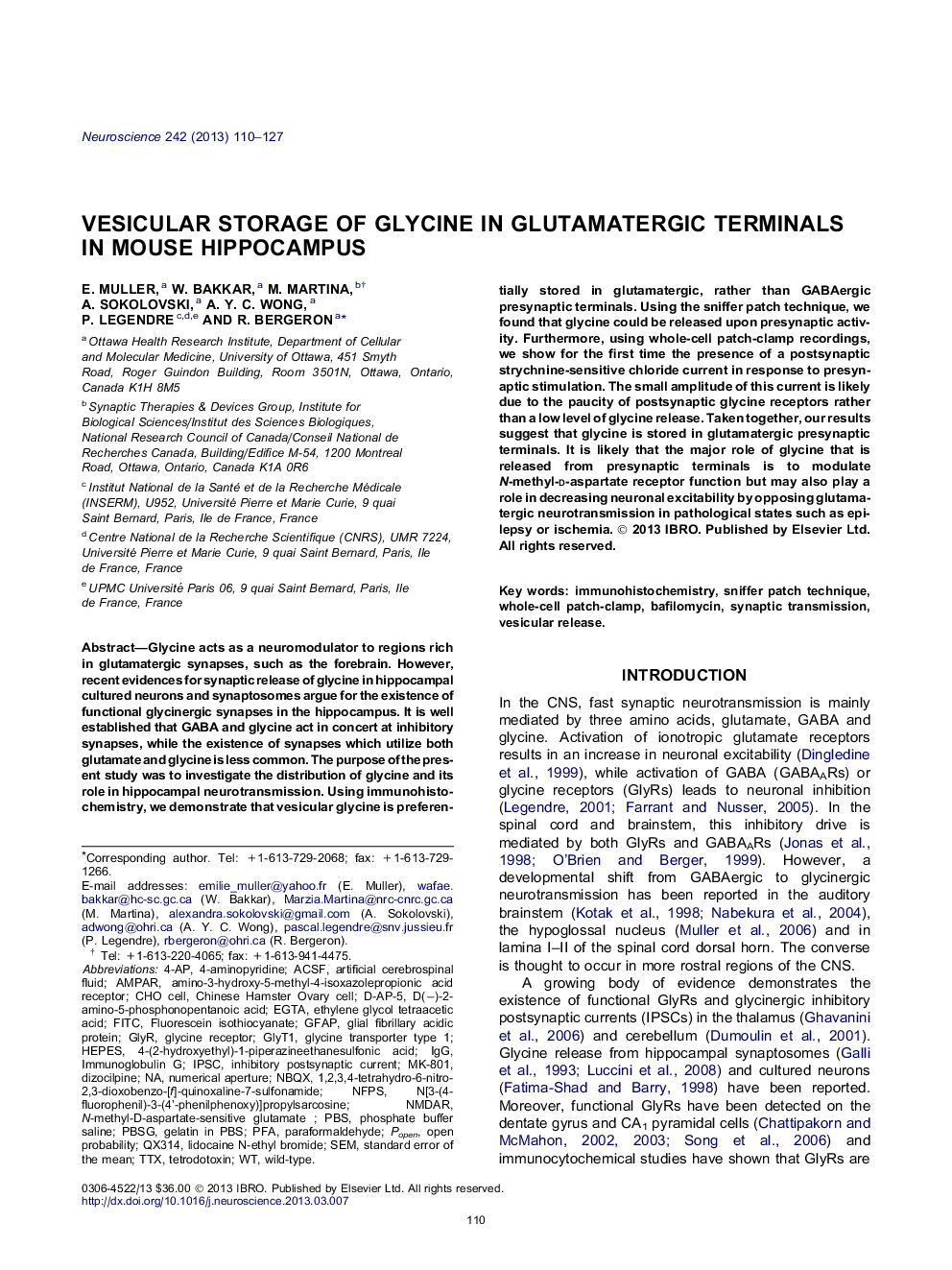| کد مقاله | کد نشریه | سال انتشار | مقاله انگلیسی | نسخه تمام متن |
|---|---|---|---|---|
| 4337910 | 1614834 | 2013 | 18 صفحه PDF | دانلود رایگان |

• Immunocytochemical localization of glycine in CA1 pyramidal neurons.
• Co-storage of glycine in glutamatergic presynaptic terminals.
• Activity-dependent release of glycine.
• Functional expression of synaptic and extrasynaptic GlyRs.
Glycine acts as a neuromodulator to regions rich in glutamatergic synapses, such as the forebrain. However, recent evidences for synaptic release of glycine in hippocampal cultured neurons and synaptosomes argue for the existence of functional glycinergic synapses in the hippocampus. It is well established that GABA and glycine act in concert at inhibitory synapses, while the existence of synapses which utilize both glutamate and glycine is less common. The purpose of the present study was to investigate the distribution of glycine and its role in hippocampal neurotransmission. Using immunohistochemistry, we demonstrate that vesicular glycine is preferentially stored in glutamatergic, rather than GABAergic presynaptic terminals. Using the sniffer patch technique, we found that glycine could be released upon presynaptic activity. Furthermore, using whole-cell patch-clamp recordings, we show for the first time the presence of a postsynaptic strychnine-sensitive chloride current in response to presynaptic stimulation. The small amplitude of this current is likely due to the paucity of postsynaptic glycine receptors rather than a low level of glycine release. Taken together, our results suggest that glycine is stored in glutamatergic presynaptic terminals. It is likely that the major role of glycine that is released from presynaptic terminals is to modulate N-methyl-d-aspartate receptor function but may also play a role in decreasing neuronal excitability by opposing glutamatergic neurotransmission in pathological states such as epilepsy or ischemia.
Journal: Neuroscience - Volume 242, 9 July 2013, Pages 110–127